MiniatureBuildings.co.uk : Exploring model buildings of all sizes and styles
- Exhibits (top)
- Home
-
About
Us -
Recent
Articles -
Scales &
Uses - Modelling
-
All
Articles
Miniature Buildings
(top of page)
Home
Articles
- Miniature
Buildings - Home +
-
Recent
Blogs -
All
Articles
.
Miniature Buildings
Some thoughts on building models of all types and sizes
Some thoughts on building models of all types and sizes
Welcome. If you have not visited Minature Buildings before can I suggest you begin with my Aims and Scope article or at the Home Page. If you have visited before - welcome back. I hope this article is of interest to you.
Presepi
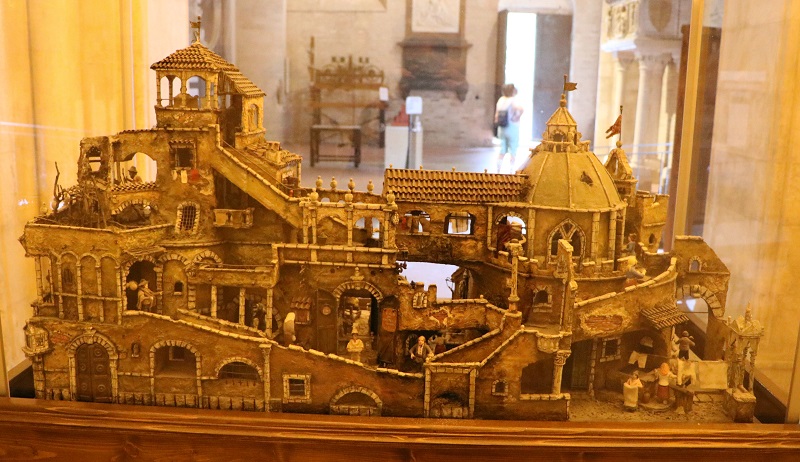
A presepe from the cathedral in Fermo
Believe it or not, this is a nativity diorama. Or in Italy, which is their main home, a 'presepe'. The distinctive element of presepi, which earns ther place in a site dedicated to Miniature Buildings and makes them much more than simply nativity sets, is that they are set in a fantasy village scene full of houses and other buildings.
Sometime in the seventeenth century, beginning in Naples, nativity scenes expanded from being just a crib populated by the Holy Family, shepherds and magi. The core nativity scene began to be surrounded by daily life events. The practice spread and is common in much of Italy and in Southern France. The extended village around the nativity is peopled by charecters not just from scripture but also from contemporay Italian or French life. I say contemporary but in most cases this means contemporay with 18th century Naples. Though not always, more modern figures are sometimes included. I discuss this a bit more in an article about 'Santons' - the figures used in these seasonal dioramas in France.
Nativities of all descriptions are one of my enthusiasms so I'm spending a bit longer on this than it really deserves. On the pretext that presepi usually feature buildings as a backdrop to the figures.
I began this article with a picture of a presepe permantly on display in the cathedral of the hilltop town of Fermo in the Marche, probably our favourite Italian region. It was made by master Ciro Stajano and was donated to the Cathedral. It is described as "A precious work that meticulously reconstructs sixteenth-century environments in the most authentic tradition of the Neapolitan crib".
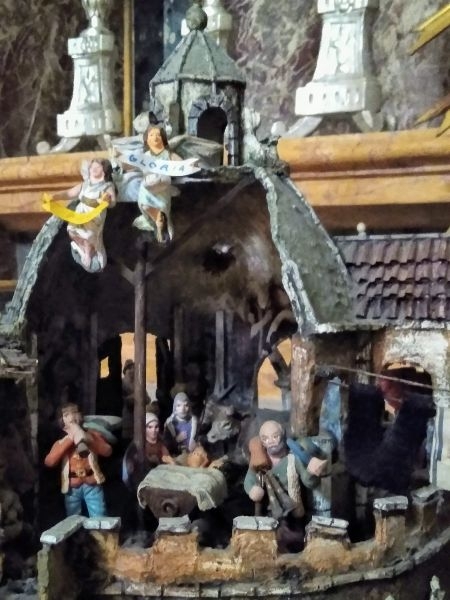
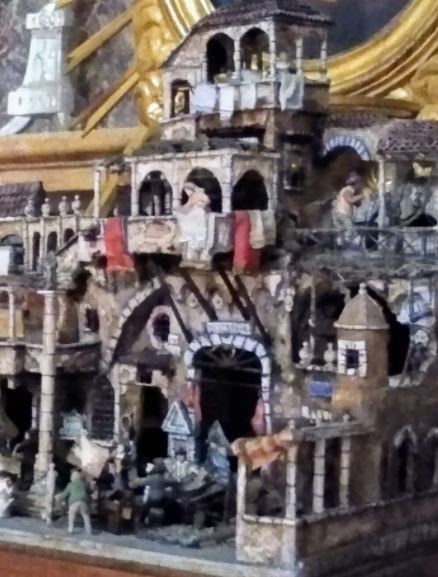
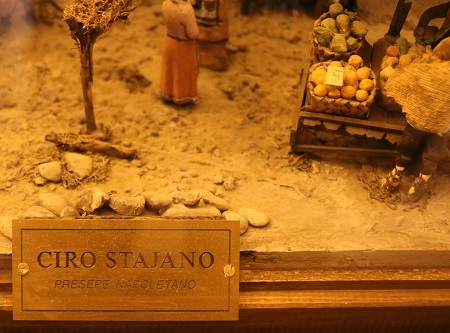
The central nativity scene and details from the surrounding village.
 The central nativity scene
The central nativity scene
 and details from the surrounding village.
and details from the surrounding village.

The Cathedral of Fermo is enriched with a precious work, a nativity scene, the result of the mastery and artistic skills of Ciro Staiano, a former teacher of the Art Institute today a Liceo Artistico and a multifaceted artist capable of giving life to simple and poor materials and donating them a new existence.
Maestro Staiano has managed to reconstruct with meticulous details, with care and precision the sixteenth-century environments and architecture within which he places his Nativity, becoming part of the tradition of the Neapolitan nativity scene which by its very nature and history is set in Naples in the eighteenth century.
In the Neapolitan nativity scene, the sacred, the Nativity of Jesus and the "profane" meet and merge everyday life with its efforts and activities and in this synergy the Christian message is strengthened and plastically takes shape: the Son of God incarnating in a man he participates until the death of the human condition and lives the daily life so meticulously represented.
Ciro Staiano was born in 1950 in Gragnano (NA), he graduated from the State Institute of Art of Sorrentopresepeb and from the Academy of Fine Arts in Naples with the Masters Giovanni Brancaccio, Domenico Spinosa and Arnoldo Ciarrocchi.
He has taught artistic disciplines at the State Art Institute of Spoleto, at the State Art School of Porto San Giorgio and at the Higher Art Institute of Fermo. He has participated in numerous international exhibitions of Contemporary Art in Madrid, New York, London, Tokyo but also in Rome and Florence. His works are exhibited in numerous museums and private and public collections. In 1995, a nativity scene of him represented Italy in an exhibition in Luxembourg in that year the European capital of culture. As described in this site.

This one, according to the museum's own publicity material, is "truly a wonder". With over 100 separately created pieces made from painted and gessoed wood, terracotta, silk and other fabrics, and mixed media and covering 250 square feet, the museum’s presepio has a vibrancy that captures a life in the figures and scenes, each one playing an important role. Museum of Art’s Neapolitan Presepio. More than 100 figures, created between 1700 and 1830 by Italian craftsmen, represent the Neapolitan concept of the Nativity in a panorama of village life at the time of Jesus’ birth.
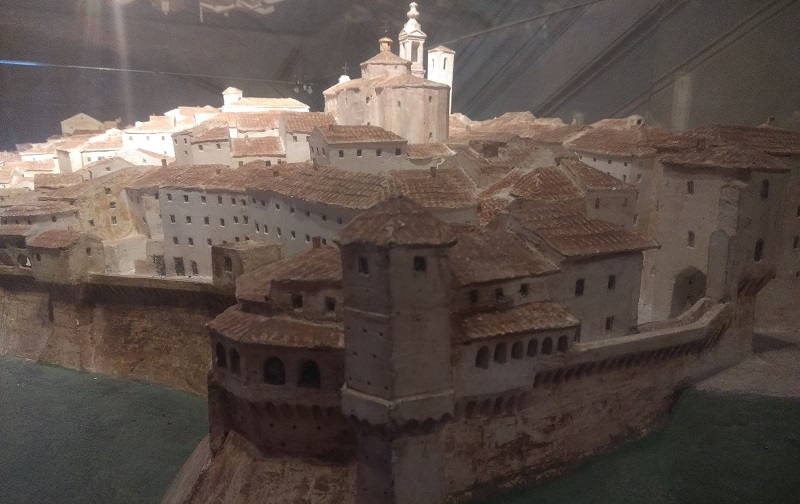
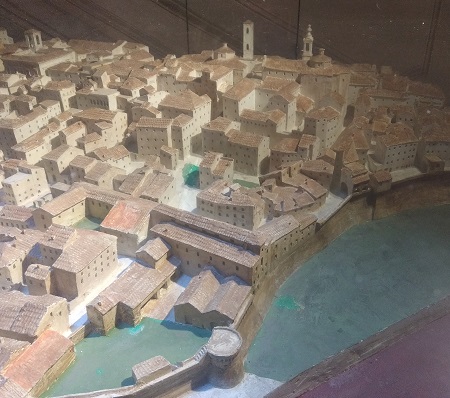
The city of Jesi at 1:200
Continuing the theme of Italian towns and villages, this model is displayed in the civic museum at Jesi. One of the lesser known towns of Italy, I can heartily recommend it.
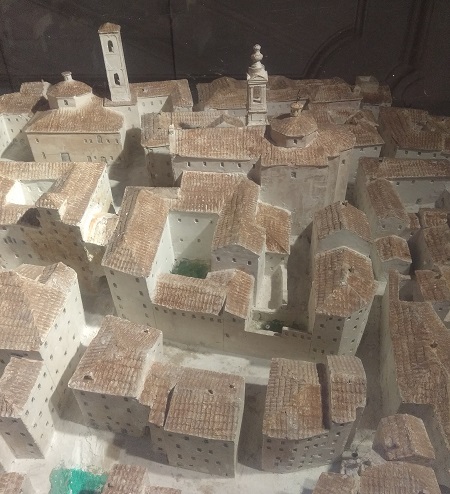
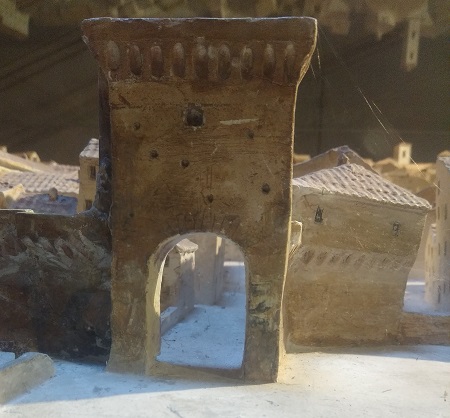
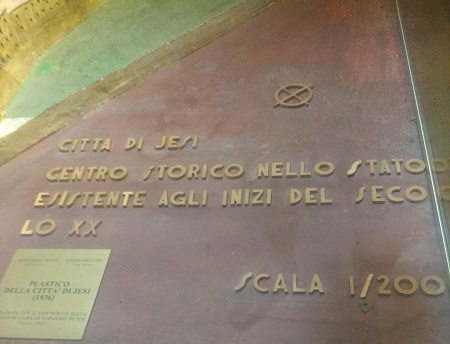
The model of the town was made in 1936 and restored in 2002. The modellers were Aristodemo Marini (1912-1993) and Stelvio Paoletti (1916-1959).
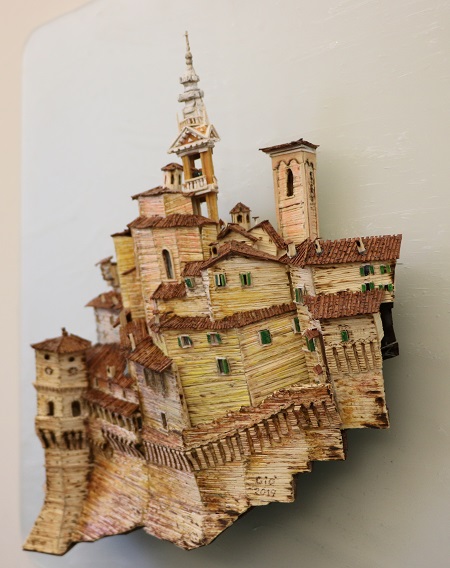
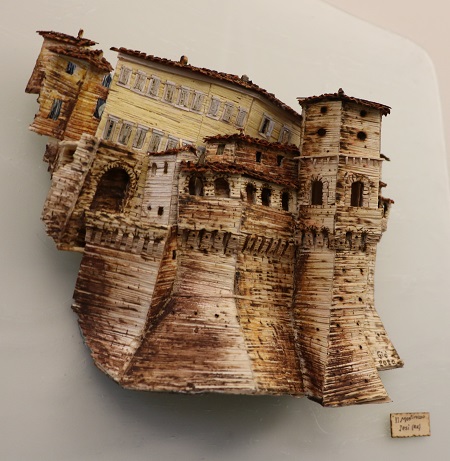
Also in the museum at Jesi were these unique half-relief models, displayed mounted on the wall and available to buy. At a price. Around €2,200 each. So, lovely as they were, I passed on the opportunity.
Much as I love Italy there are clearly models to be found elsewhere. Another love is France and these examples are from the ruined abbey at Cluny in the Burgindy region.
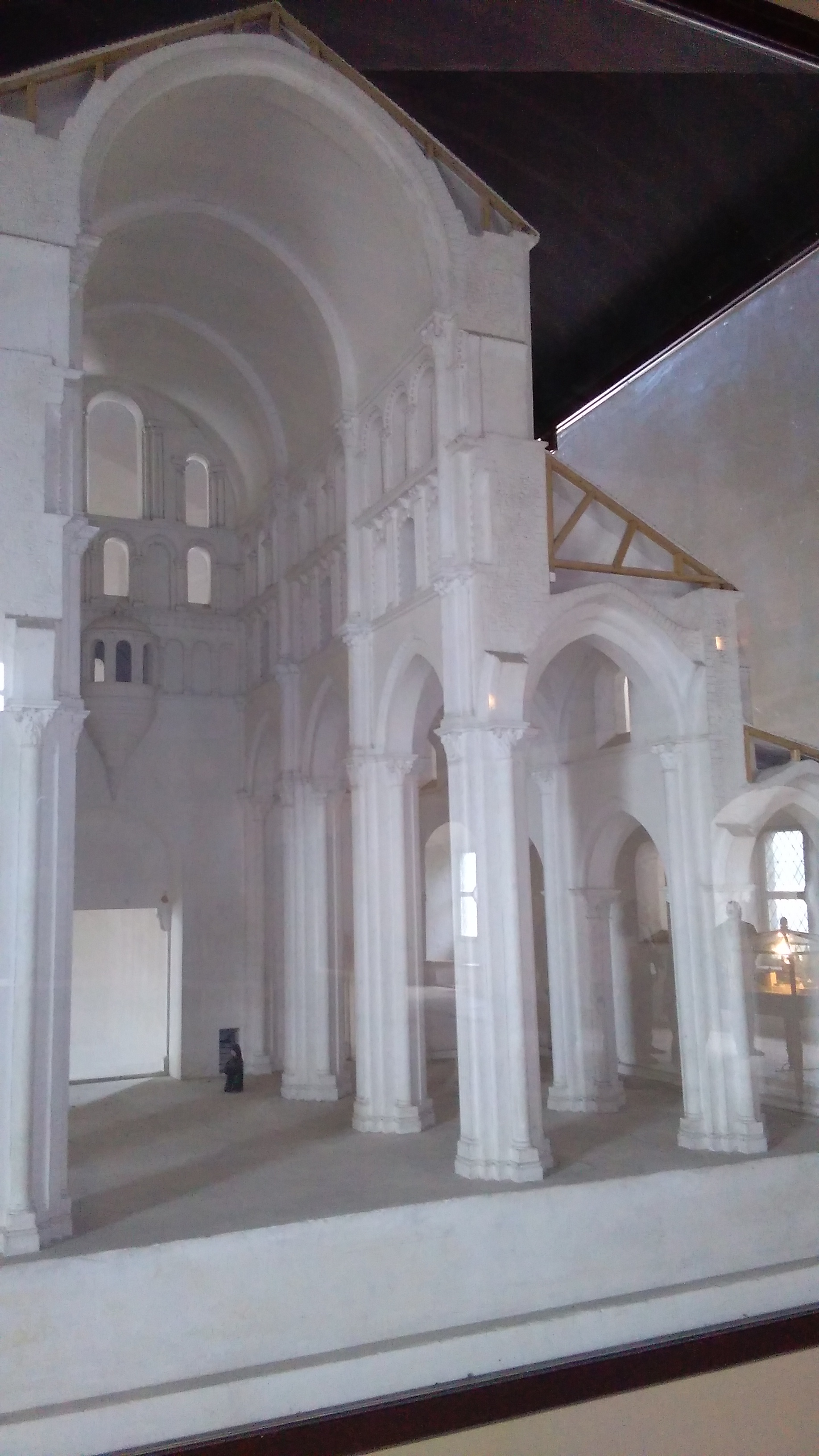
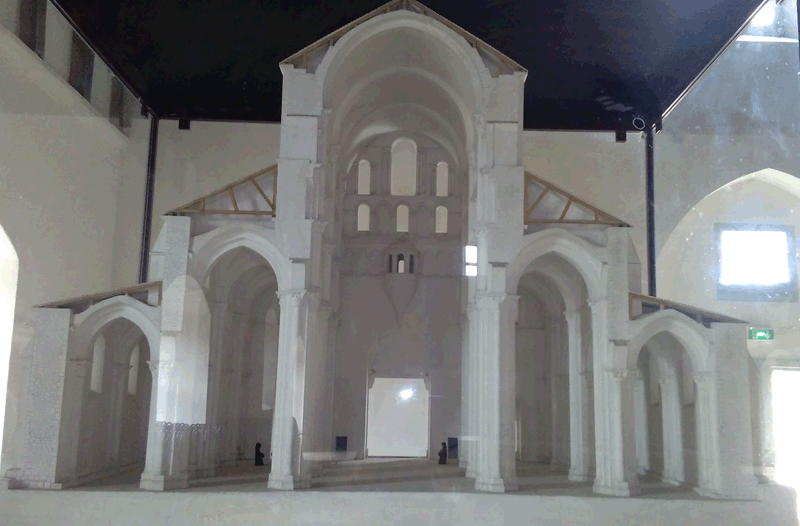
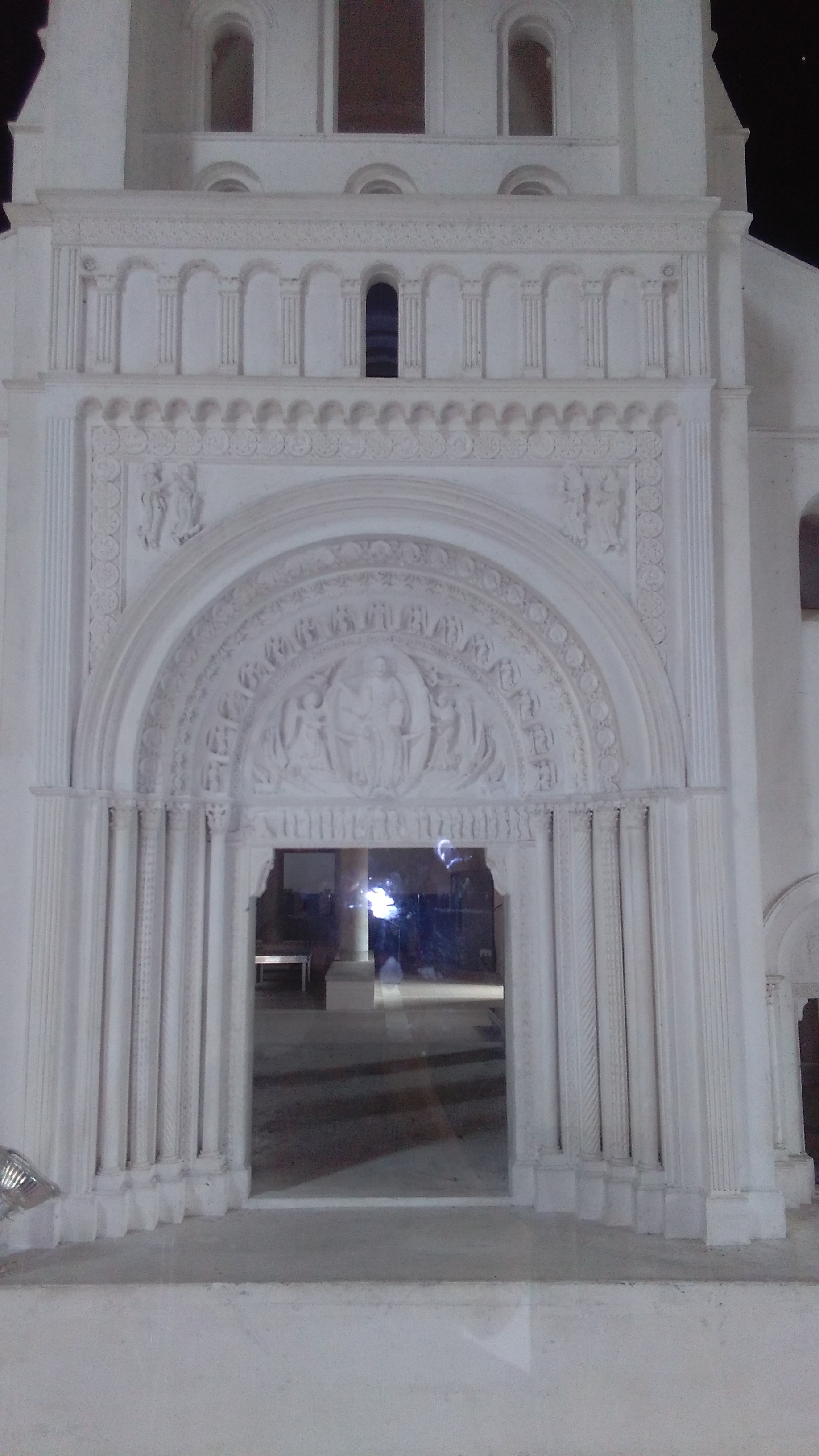
From the abbey at Cluny in France
The next two examples I have also included in my article on models made from card.
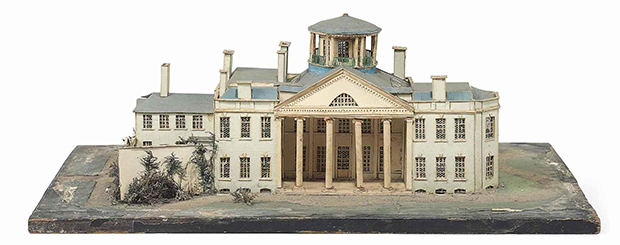
A William IV period cut-card model of Newtown Park, Hampshire, dated 1831 by John Bellamy. In 2013 it sold at Christie's for £3,500. Under a glass dome, inscribed in pen to the underneath 'by ... Bellamy Stantway House Westbury Gloucestershire 1831' and '1003' 8½ in (21.5 cm.) high; 17½ in. (44.5 cm.) wide; 10½ in. (27 cm.) deep
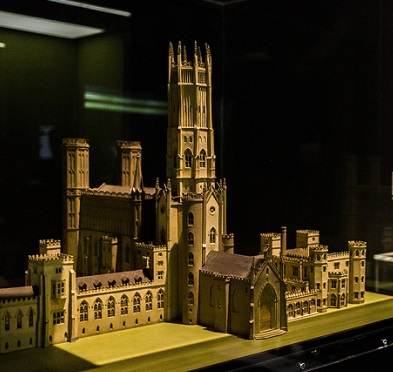
The second is a model of Fonthill Abbey, Wiltshire, a vast Gothic edifice built for William Beckford between 1786-1807.
As always, please
e-mail
Miniature Buildings
if you have something to add. Comments, criticisms,
extra thoughts, pictures, or even complete articles
for inclusion in the Miniature Buildings site
are all welcome. Or if you would like to be added to
my mailing list to hear when a new article is published.
David,
January 2021